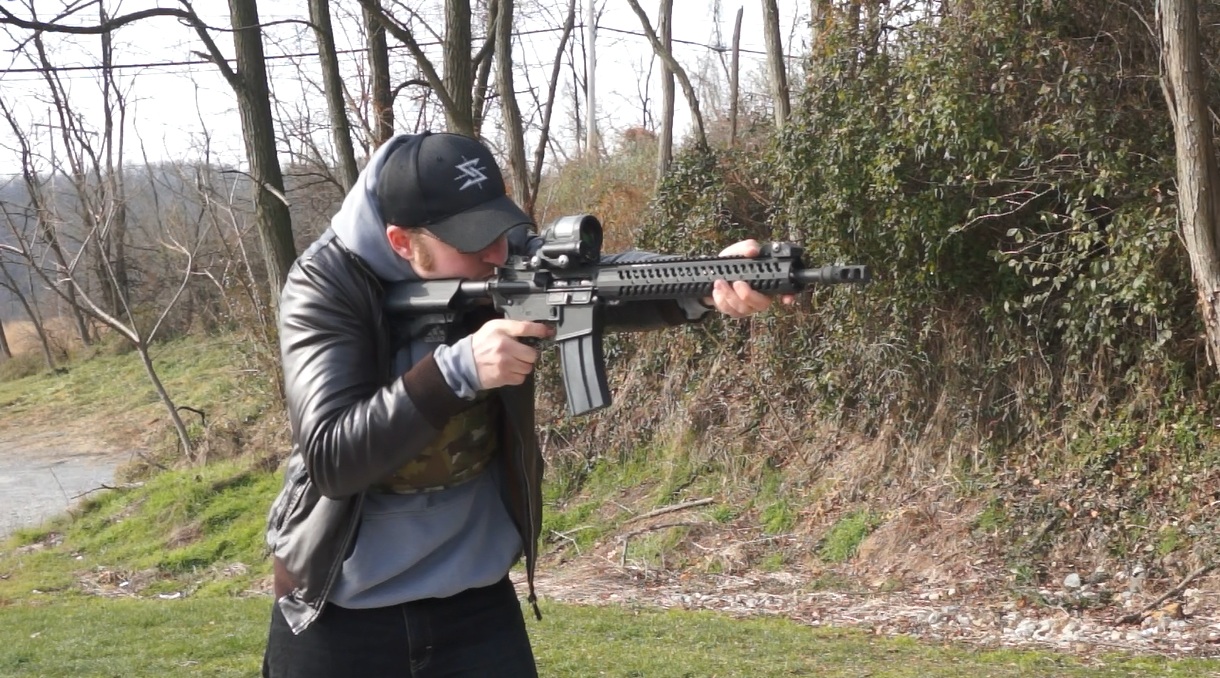If you look at some of the popular “tactical” AR-15 carbines that have come out over the last few years, it’s easy to notice a trend. Haley Strategic’s Jack Carbine, LaRue’s Costa Edition 5.56, the EAG Tactical Carbine, and Noveske’s Light Carbine and Afghan… all use a 14.5 inch barrel with a mid-length gas system.
Most AR-15s with carbine-length gas systems are over-gassed, requiring a heavy buffer to avoid bolt bounce and excessive wear. The mid-length system significantly reduces this problem, by simply extending the system two inches. The longer gas tube has several distinct advantages. First is the greater volume, which means the pressure of the gasses is lower. Lower pressure leads to a smoother cycling weapon, less aggressive wear on critical parts, and softer perceived recoil.
Let’s examine the recoil component briefly. On an over-gassed carbine, the bolt carrier group is pushed rearward with such force that a regular-weight buffer cannot slow it sufficiently. Thus, the buffer slams into the rear of the tube, creating a jarring impact that is transferred to the shooter.
For those who run fixed front sight bases, the increased sight radius of the mid-length system means that your shots can be more accurate. The added rail space on a handguard can also be of benefit.
So we can see why all of the high-speed carbines listed in the beginning of this article use the mid-length system. They also utilize a shorter barrel than is commonly used by most civilian shooters. While I love the versatility of the 16 inch barrel, a shorter overall package is indeed desirable for a combat-oriented carbine. A shorter barrel will be lighter, easier to maneuver in tighter spaces, and easier to bring to bear on the target than a longer one.
Quality machines aren’t cheap, and the carbines listed above (with free-float handguards) cost anywhere from $2,000 to nearly $3,000. Unfortunately, ammunition isn’t cheap either. And when dealing with stainless steel barrels (like on the Costa Edition 5.56), I would be loathe to feed it steel-cased Tula ammo.
One alternative to paying thirty cents a round is a .22 conversion kit for your AR-15. While this allows for very low-cost shooting, it does not replicate the feel of 5.56mm, nor does it have the range. Practicing with .22lr won’t help you get better at controlling recoil, lead fouling in the gas port/tube can be an issue, and the round itself is not an ideal home defense round.

Enter the Shashka
The Shashka carbine is named after a Cossack cavalry saber; a lightweight and versatile weapon.
After evaluating the Ballistic Advantage Medium Heavy Rigid barrel (in 5.45x39mm), I received several inquiries about a 14.5 inch mid-length barrel in 5.45x39mm as part of a training upper.
When I set out to create that Shaskha, my goal was simple; to have an upper that looked, felt and handled like one of the aforementioned 5.56 and provided combat-accuracy for a fraction of the price in ammunition.
What I ended up with was an upper that, far from being a training substitute, can be used as a primary weapon in a wide variety of conditions. It is reliable, handy and lethal. I look forward to showing you all the Shashka.
Next up: the barrel and operating system parts of the Shashka.
-By Allen Cosby
Latest posts by 53gr (see all)
- H&H Medical: H Bandage and Thin H Bandage – January 2, 2020
- S&W M&P M2.0 Series – January 9, 2017
- SIG Sauer P938 – October 19, 2016

Leave a Reply